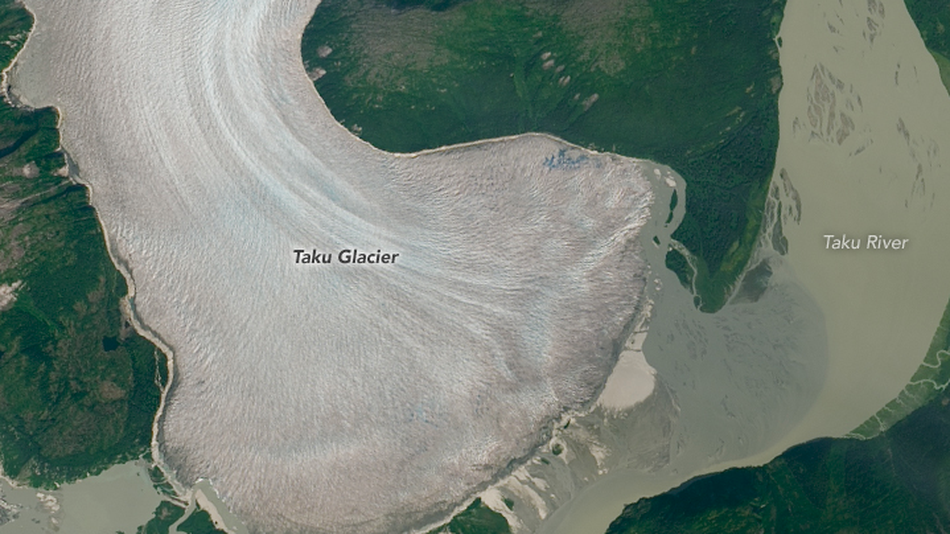Even the defiant Taku Glacier, long resistant to warming, has started shrinking

By Mark Kaufman From Mashable
Chris McNeil has journeyed to Alaska’s sprawling Taku Glacier at least once a year for the last decade. At 259 square miles, it’s larger than Chicago. “You can see across this thing for days,” said McNeil, a geophysicist at the U.S. Geological Survey.
For decades, Taku has been exceptional. Unlike most Alaskan glaciers, Taku had resisted shrinking. Between the 1940s and 1980s, Taku attracted significant scientific interest because it grew while the glaciers around it, collectively called the Juneau Icefield, thinned. By the 1990s and into the 2000s, Taku had stopped growing, and stalled. But now, glacier scientists have confirmed that even Taku — a robust glacier 4,860 feet thick — has finally started to lose mass.
“Just in the last five years we’ve had a number of extremely hot summers,” said McNeil, the lead researcher on Taku. “The glacier has begun to thin.”
In July, Alaska experienced its warmest month on record, and between October 2018 and October 2019 Alaska’s average temperature was itswarmest 12-month period ever recorded. This warmth made Taku vulnerable.
“It is the combined warmth in 2018 and 2019 that led to visible physical changes,” said Mauri Pelto, a glacier scientist at Nichols College who has researched Taku for decades.
McNeil and Pelto worked together on Taku research that will be formally published in the Journal of Glaciology in the coming months.
These days, it’s rare for any glacier in Alaska to either advance or stall, rather than retreat. Of some 27,000 Alaskan glaciers, just 0.01 percent, or about 270, are advancing or stalled, noted McNeil. “It’s an incredibly small number,” he said.
Taku’s ability to resist thinning — until 2018, anyway — lies in its frigid, high elevations. Much of the vast river of ice is higher than surrounding, already-rapidly thinning glaciers. This means most of Taku sits at elevations where it collects snow, explained Pelto.
But with increased surface warming, the elevation at which the snow starts falling has been rising higher, a critical altitude called the snow line. In turn, there’s less snow accumulating on Taku while ice continues to melt near sea-level. Taku can no longer keep up. So, overall, it’s now losing mass.
“Some areas have receded over 100 meters,” said McNeil.
For more on this story and video go to; https://mashable.com/article/taku-glacier-retreat-thinning/?utm_source=feedburner&utm_medium=feed&utm_campaign=Feed%3A+Mashable+%28Mashable%29





